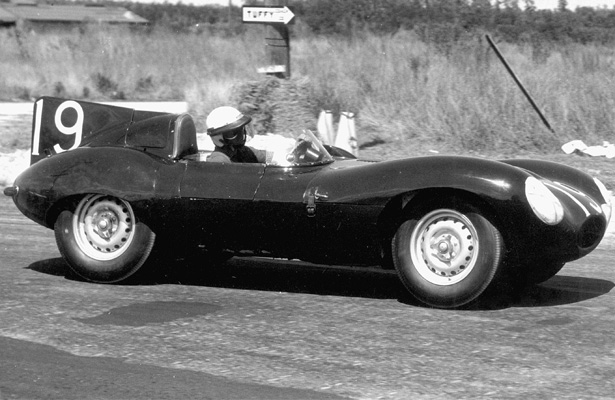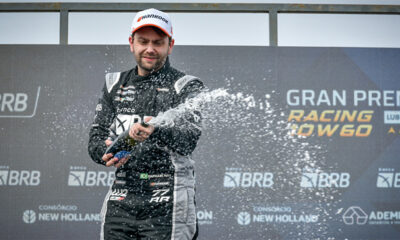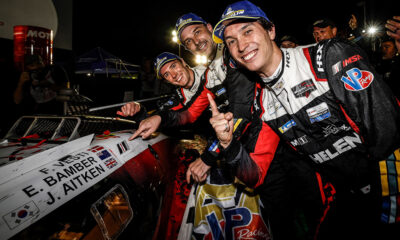
Photo: Sebring Archives
Sebring is known for the unexpected. Some of the most bizarre moments in endurance racing history have taken place at the historic circuit that originated from a WWII B-17 combat crew training base. We have chosen three races as perhaps the wildest ever: 1955, 1969 and the incredible 1983 race. In this first installment we’ll look at the 1955 Sebring 12-Hours.
The 4th annual 12-hour classic on the old Hendricks Field air base started and ended in utter chaos. In between was one of the greatest duels ever seen at a major endurance race.
Nearly 100 cars had entered Sebring in 1955, but promoter Alec Ulmann decided to set a limit of 80 starters. Determining the final grid proved to a difficult task, and several teams on the reserve list were denied a spot on the grid, even though they posted practice times faster than those making the cut.
When the field of 80 starters pulled away in the traditional Le Mans start on March 13, six cars denied a spot on the starting grid decided to start anyway. This organized protest caught race officials by surprise.
The six cars entered the track at an opening just beyond the pits and pulled off the circuit after one lap, but as these “outlaw” entries went by timing stand in the final turn, Joe Lane’s scoring staff was in near panic, trying to account for the six car numbers that weren’t supposed to be in the race.
An accident on the third lap added to the confusion. The ambulance dispatched to the scene was hit by the Ferrari of Bob Said (father of current IMSA driver Boris Said). In those days there were no full course cautions, so racing continued.
After the bizarre first few minutes, the race settled down to a battle between the Briggs Cunningham entered Jaguar D-type driven by Mike Hawthorn and Phil Walters (aka Ted Tappett in open wheel racing) and a Ferrari 750S Monza driven by Carroll Shelby and Phil Hill.
Shelby and Hill were not yet well known, but this pairing of future legends in the Allen Guiberson owned Ferrari would give the Jaguar a run for the money.
Of course, there were several other notable entries in the race, including factory entries from Maserati, Porsche and Austin-Healey. But the race was clearly going to be a two-car battle. Seldom separated by more than a few seconds, the Jaguar and Ferrari battled into the evening.
In the final tense minutes of the race, things began to unravel quickly. When time expired at the 12-hour mark, the PA announcer called the Ferrari the winner as it crossed the line. When the Cunningham crossed the line a short time later, they were flagged the winners.
Both teams arrived in victory lane to celebrate. Guiberson’s team was fully convinced they had taken the lead during the final round of pit stops. The Cunningham team was equally confident they had won.
Two victory lane celebrations were held honoring both teams while officials scrambled to verify the results. Joe Lane emerged from the timing stand to confidently declare the Jaguar had won by a margin of about 22 seconds.
Guiberson immediately filed a protest with the American Automobile Association (AAA), sanctioning body for the race.
Two weeks later a press release was issued certifying the Jaguar victory. Cunningham had scored his third straight win at Sebring as a car owner, each time with a different car. Lane had produced a detailed race progress report and lap charts that showed the Jaguar had led all but four laps the entire race.
An interesting sidelight to the race: Ray Crawford drove solo for the entire 12 hours in his Lincoln-powered Kurtis Kraft, finishing 13th overall and first in his class. Though generally not allowed, he had obtained special permission from the AAA to drive the entire race himself, supposedly due to his experience competing in the Mexican road races.
Another interesting note was the entry of actor Jackie Cooper in an Austin Healey. Although probably not as well known to the current generation of race fans, Cooper was a major star at that time and thus began a trend of celebrities racing at Sebring that continues today.
The win by Jaguar was their first and only overall victory at America’s most important endurance race. Walters would retire a few months later after witnessing the tragic events at Le Mans, while Hawthorn died in a road accident in 1959.
Though disappointed with their second place finish. Hill and Shelby would achieve fame at Sebring. Hill would go on to win overall three times, while Shelby would lead the legendary Cobra team to important international wins at Sebring.





















